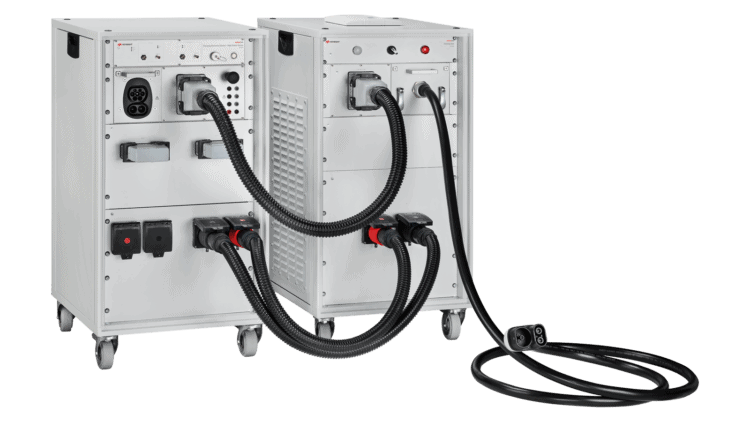Keysight Technologies released the enhanced Scienlab Regenerative DC Emulator (SL1800A Series), the next-generation high-power direct current (DC) emulator for electric vehicle (EV) fast charging applications that enable customers to achieve high-power DC charging test up to 270 kilowatts (kW) in a small footprint.
Typical high-power DC test systems are large and occupy valuable lab floor space. These systems are also inefficient, requiring large amounts of energy to run the test system and to keep the lab space cool during high-power tests.
When performing high-power DC fast charging tests, customers need a solution that combines the needed power requirements with communication tests and monitoring that is easy to set up and use.
Keysight’s Scienlab Regenerative DC Emulator enables customers to realistically emulate high-voltage, high-power electric vehicle batteries in charging test applications, such as high-power DC fast charging, when paired with Keysight’s SL1047A Scienlab Charging Discovery System. This solution can emulate EV batteries up to 1500 volts, up to 900 amperes, and can be paralleled to achieve up to megawatts (MW).
Benefits of Keysight’s SL1800A Series
Reduced energy costs to operate the system and cool lab space thanks to the use of state-of-the-art silicon-carbide (SiC) wide-bandgap semiconductors. In addition, only 4% of the system’s power is lost as heat.
Regenerative system that returns power to the grid when acting as an electronic load during EV battery emulation/charging tests.
Space-saving form factor that maximises valuable lab floor space.
"Our next-generation high-power DC emulators, based on silicon-carbide technology, are greater-than 96% efficient and provide more power and higher voltages in less space, when compared to similar systems," said Thomas Goetzl, vice president and general manager for Keysight's Automotive & Energy Solutions business unit.
"When combined with the SL1047A Charging Discovery System, it enables our customers to test all aspects of high-power DC fast charging in their lab."
Thomas Goetzl



